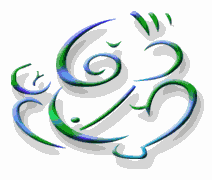

DIFFERENCES BETWEEN
TANJORE AND MYSORE SCHOOLS


|
The paintings of the Mysore School and Tanjore School are mistaken for each other because of certain resemblances like highly conventionalized landscapes and also the mythological themes for their subjects, arising as both belong to the same tradition. However, on closer scrutiny, the following subtle but important differences could be noticed between these two Schools of Painting: 1. The Tanjore School preferred cloth on wood using raw lime powder with a base made of powdered seeds of tamarind for jessowork. The Mysore School used paper on cloth and wood with white lead (safeda)makhigamboge (yellow) taken from the juice of revanachinihalugiving a slight golden tint. 2. The Tanjore School jessowork is of high relief while that of Mysore School is of low relief. 3. The Tanjore School use gold coated silver leaf but the Mysore School use pure gold leaf which not only enhances the lustre but also makes the gold work last longer. 4. In Tanjore paintings, colourful glass pieces and pearls for embellishing are made use of - a rare feature in the Mysore School of paintings.
|
5. The jewellery and dress shown in Mysore paintings reflect the contemporary ornaments of royalty. The throne depicted in Mysore paintings both for God and for king is a replica of Mysore throne Simhasana. 6. In Mysore painting the faces of God and men are normally round. In case of presiding gods the faces are slightly oval in shape while the other faces are round. 7. In Mysore School painting, the architectural details reflect 17th /18th century architecture of Mysore with tapering, fluted columns and the cusped arches of the pavilions. 8. The delicate lines, the graceful delineation of figures and the discrete use of bright colours and lustrous gold make the Mysore painting far more attractive than Tanjore paintings. The Mysore
painting had been a technique school and it absorbed many modern aspect
of painting techniques. Nowadays 6 mm thick, ready made,water resistant
plywood is used as base, instead of ancient method of making board with
layers of papers. Also readily available water colours have taken the
place of colours made of earth, flowers and plants. In the jesso also
ingredients are added to take care of the weather conditions and fungus
attack. However, the basic traditional methods of painting and the theme
remain the same.
|